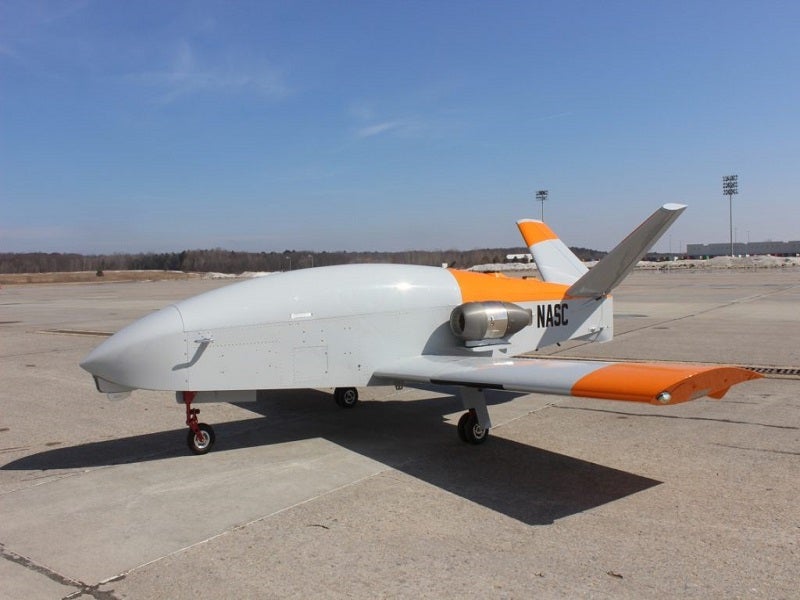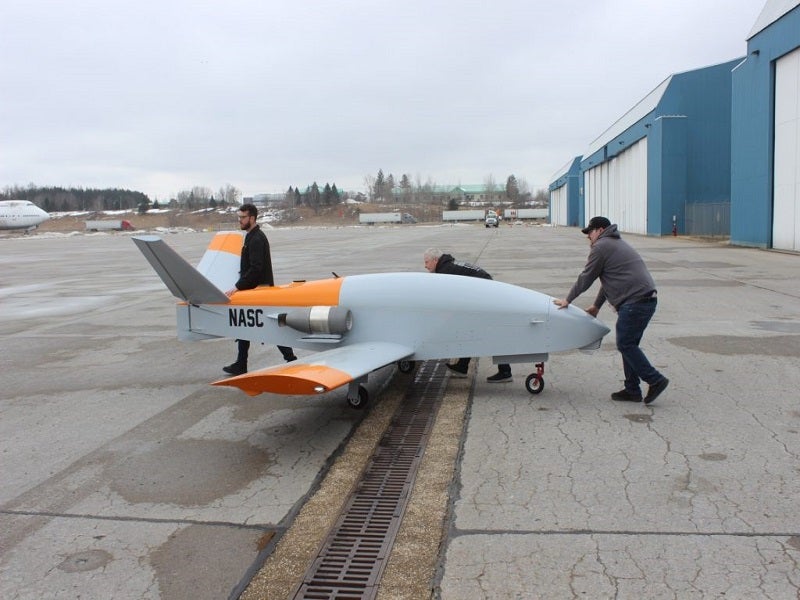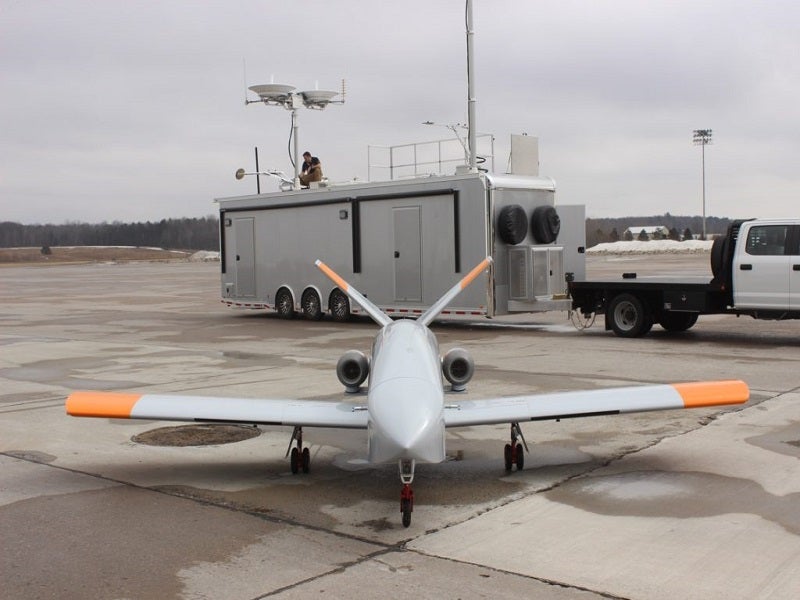TRACER is a purpose-built and jet-powered multi-role unmanned aerial vehicle (UAV) developed by Navmar Applied Sciences Corporation (NASC) in partnership with Sonex Aerospace.
NASC is an engineering and technical services company based in the US, specialising in UAV design and integration, ground control stations (GCS) for UAVs, as well as advanced acoustics and surveillance systems.
NASC unveiled the TRACER UAV platform at the AUVSI XPONENTIAL 2022 autonomous technology event in Orlando, Florida, US, in April 2022.
The new twin-engine and jet-powered UAV will be offered to customers as a low-cost, high-performance alternative. It is designed as a high-speed and highly survivable versatile aircraft to support different unmanned military operations.
The NASC-Sonex Aerospace partnership also developed other UAV platforms including the Teros-C Group 4 UAS, Tigershark Block 4, and the SubSonex Twinjet UAS.
Design and features
TRACER is based on a custom modified version of the SubSonex personal jet manufactured by Sonex Aircraft, an affiliate of Sonex Aerospace. The UAV has a relatively small footprint and can be reconfigured quickly.
Its design incorporates a unique Y-Tail configuration for better handling and enhanced rudder authority and stability.
The UAV utilises cost-effective, all-metal rivet construction, enabling easy repair and maintenance on the field. Its airframe is made of light weight and corrosion-resistant aluminium.
The UAV measures 5m in length and has a wingspan of 5.5m. Its gross weight is 658kg, while the empty weight of the system is 340kg.
The main and nose landing gear of the aircraft is retractable and comes with an actuator and a high-capacity braking system.
The low-risk, fixed-wing UAV can be launched and recovered using the conventional wheeled take-off and landing method.
Mission capabilities
The unmanned system can be deployed to perform different missions including manned-unmanned teaming (MUM-T), counter UAS (C-UAS), reconnaissance, communication relay, insertion into contested airspace, electronic warfare (EW), and military training activities.
It can also be used as a reliable platform for research, development and testing advanced technologies.
Payload capacity of TRACER UAV
The multi-mission drone is designed to carry a range of payloads in the internal and external payload stores, with a maximum payload capacity of up to 91kg.
The payload sections are located within the fuselage, on each wing tip and under each wing, as well as on the centreline and within the nose radome.
Control and command
The drone can be controlled by the TRACER autopilot system that is based on a modified version of the NASC GCS used for the TigerShark-XP proven fixed-wing, Group 3 UAS, and the Teros medium altitude long endurance (MALE) UAV.
NASC also developed the Mobile Operations Center (MOC) for the command and control of the UAV. The MOC is a Wi-Fi-enabled, customised trailer that can operate as a field deployable command centre. It is equipped with a GCS, provisions for UAV transport, and ground support equipment.
Other equipment installed in the operations centre include a telescopic steel mast, a heads-up display, internal communications system, and electronic flight instrumentation system.
The MOC will allow the customers to operate the UAS from any location. Furthermore, it can be integrated with different systems to meet the mission requirements of customers. The MOC can be prepared for mission within one and a half hours.
Engine and performance
NASC TRACER is powered by two compact jet engines with a power-to-weight ratio of up to 258lbf-ft (1,300N). The fuel capacity of the aircraft is 378.5l.
The UAV has a service ceiling of 7,925m above mean sea level. It can fly at a cruise speed of 225kt.






